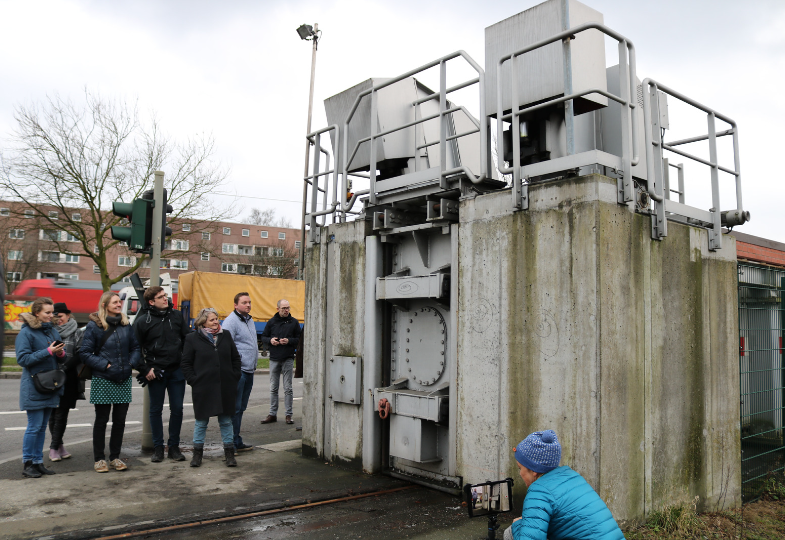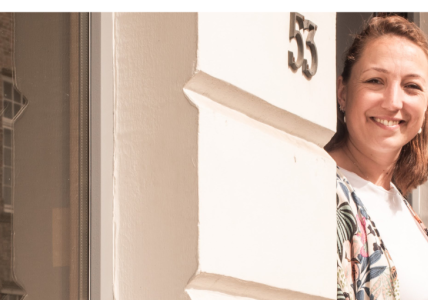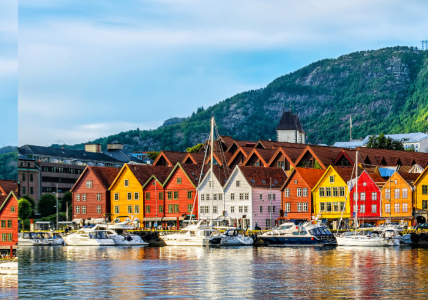FAIR demonstrated how to do more with less - reducing costs while adding benefits. The partners created new tools to manage core flood risk assets such as dykes, sluices, and flood gates.
Across the North Sea Region, managers are scrambling to keep flood risk infrastructure in good shape. And they also need to upgrade the assets to withstand the more frequent and severe floods that are expected in the future due to climate change.
Unfortunately, much of the current infrastructure is ageing and in need of restoration, maintenance, and upgrades. The responsible authorities will therefore need to make quite heavy investments in the near future.
That is why the partners in FAIR set out to deal with these investments through cost-effective flood risk asset management.
Working together on the best way forward
The project brought together asset owners, operating authorities, and researchers to share policies and practices within the emerging science of asset management. Specifically, we sought to increase the life span, reduce life cycle costs, and encourage multifunctionality of flood risk infrastructure.
This collaboration proved successful because we all face the same future challenges, like climate change, demographic changes, and ageing and wearing of flood defences. At the same time, we were able to explore a diversity of challenges due to different place-based conditions, governmental rules, public involvement, and types of existing flood defence found across the region.
We discovered that while we shared some knowledge gaps, we also had a lot to learn from each other. In the video below, partners present what they gained from this project:
Producing tangible know-how
Each of the project's five pilots covered different aspect of flood risk management and types of flood risk assets.
Hamburg (Germany): Optimising the management of flood protection gates
The pilot covered the improvement of the maintenance concept for the flood protection assets and the integration of all relevant data in a single, web-based, intuitive information system. Among other aspects, the pilot evaluated the risk of human and tecnical errors and also included a critical review of the supplier's guidelines for maintenance.
Helsingborg (Sweden): Managing flood risk in the central city
This pilot identified critical points and objects in the city centre. With the help of this documentation and previous reports, a risk and impact analysis was carried out. For the first time, Helsingborg Municipality was able to produce a socio-economic cost analysis for inner and outer protection of the city on a longer time scale, as well as for mobile protection feasible in the near future.
Ribe Polder (Denmark): Managing multiple flood risk sources
Through FAIR, The Danish Coastal Authority and Esbjerg Municipality have gained understanding of the system surrounding Ribe. The FAIR project has created closer and increasingly beneficial cooperation between internal teams in Esbjerg Municipality for asset management, river management, and climate adaptation planning.
Middelkerke (Flanders): Innovative renewal of a sea dike
The pilot explored dunes and beach nourishments in response to the expected sea level rise. This pilot included a stilling wave basin reducing the wave energy - the first of its kind on a large scale. The site will also be the first to test the "dune before dike principle". The chosen measures are adaptive - the beach can be strengthened or the dune can be heightened according to needs. The new dike and dune can be used for multiple purposes.
Hollandsche Ijssel (the Netherlands)
Dikes along the river Hollandsche IJssel (operated by the regional water authority, HHSK) no longer meet the statutory standard. The river can be isolated from the main river, Nieuwe Maas, by a storm surge barrier (operated by Rijkswaterstaat, RWS) which controls hydraulic loads on the dikes. The partners managed to trade off costs and benefits between dike and barrier improvements, reducing lifecycle costs without compromising standards.
Strategies and tools
Our end report presents all strategies and tools developed by the partners of FAIR. This report is relevant for policymakers, funders, planners, designers, operators, and owners with an interest in asset management for flood protection.
Read FAIR’s end report or extended summary
Although the countries in the North Sea Region face similar challenges, there are many differences between and within countries, e.g. in terms of funding mechanisms, strategy, delivery, operation, and responsibilities.
Tactical handshake
In FAIR, we used three overarching ‘planning and decision contexts’ to consider the approach to asset management: A strategic, an operational, and a tactical context.The tactical handshakeis the central concept. Tactical (handshake) actions are about the order of when, where and what. It links the strategic and operational contexts, enabling two-way information and knowledge transfer.

People from FAIR inspecting flood infrastructure.
Understanding the performance of the system can be a daunting task. To aid this process, FAIR beneficiaries promoted the use of the standard Source-Pathway-Receptor framework (SPR).
The SPR framework provides a practical means of breaking up the basic components of probability and consequence into individual components. Consideration is given to both the probability of the initiating event (the source of the flood such as rainfall or a marine storm) and the probability that flood waters will reach a particular location in the floodplain, taking account of the performance of the intervening system (the pathway of the flood water).
The consequences in the event of flooding reflects both the vulnerability of the receptors and the chance that a given receptor will be exposed to the flood when it occurs.
We have demonstrated the outcome of implementing the strategy and tools in five pilots for five different challenges we will meet in the different stages of adaptive asset management.
Learning platform
Finally, we also developed a FAIR Learning Platform. The platform includes intermediate research outcomes, e.g. methods and tools, and lessons learned. The platform was set up to help flood protection asset owners, students, and trainees.
Call for policy changes
In the FAIR policy brief , we gave a perspective on the future of asset management for flood protection. Our four main recommendations are:
- Break free of the silo: Align multiple planning processes within, and beyond, flood management;
- Mind the gap: Link strategic planning and operational processes through a tactical handshake;
- Prepare for change: Develop flexible strategies and asset designs that can be adapted to meet changing requirements in future;
- Make space for innovation: Embrace and manage risk to support the development of innovative solutions.
Top 3 project highlights
Joint framework
The FAIR framework proved valuable. It helps ensure the multifunctionality of flood risk assets, while reducing the cost of asset management by at least 5% and prolonging the life of assets by another 5%. The pilot in Midelkerke even saw cost savings of 26-38%.
Policy brief
FAIR produced a policy brief including four main recommendations: 1. Break free of the silo 2. Mind the gap 3. Prepare for change and 4. Make space for innovation.
Innovative approaches
The project's pilots demonstrated the feasiblity of several innovative approaches to asset management.
About FAIR
ABOUT FAIR
The Interreg North Sea Region project FAIR started in 2015 and delivered its end results in 2020.
FAIR is an acronym for Flood defence infrastructure Asset management & Investment in Renovation, adaptation, optimisation, and maintenance.
FAIR was a collaboration of 14 partners form 7 countries. Its total budget was €4.5 million.
Learn more
Learn more about the FAIR project and its pilots.
Get in touch
Contact the project leader Bart Vonk at bart.vonk@rws.nl.
About the author
Mr. Bart Vonk started his career at Rijkswaterstaat as a geotechnical specialist for flood defences. Then he specialised in asset management for water and vessel infrastructure. With ten years of experience in operational and tactical management positions, he now works as a coordinating advisor at the division for Flood Defense Structures of Rijkswaterstaat.
His main tasks include coordination of the knowledge strategy on water safety for Rijkswaterstaat, the (inter)national collaboration of flood defense expertise during crisis, work package leader on emergency response for the Interreg project Polder2C’s, and chairman of the two National Coordination Committees Flood Threat and Drought. At this moment Bart Vonk takes the lead in an international collaboration on an international handbook on Emergency Response for Flood Defences.




